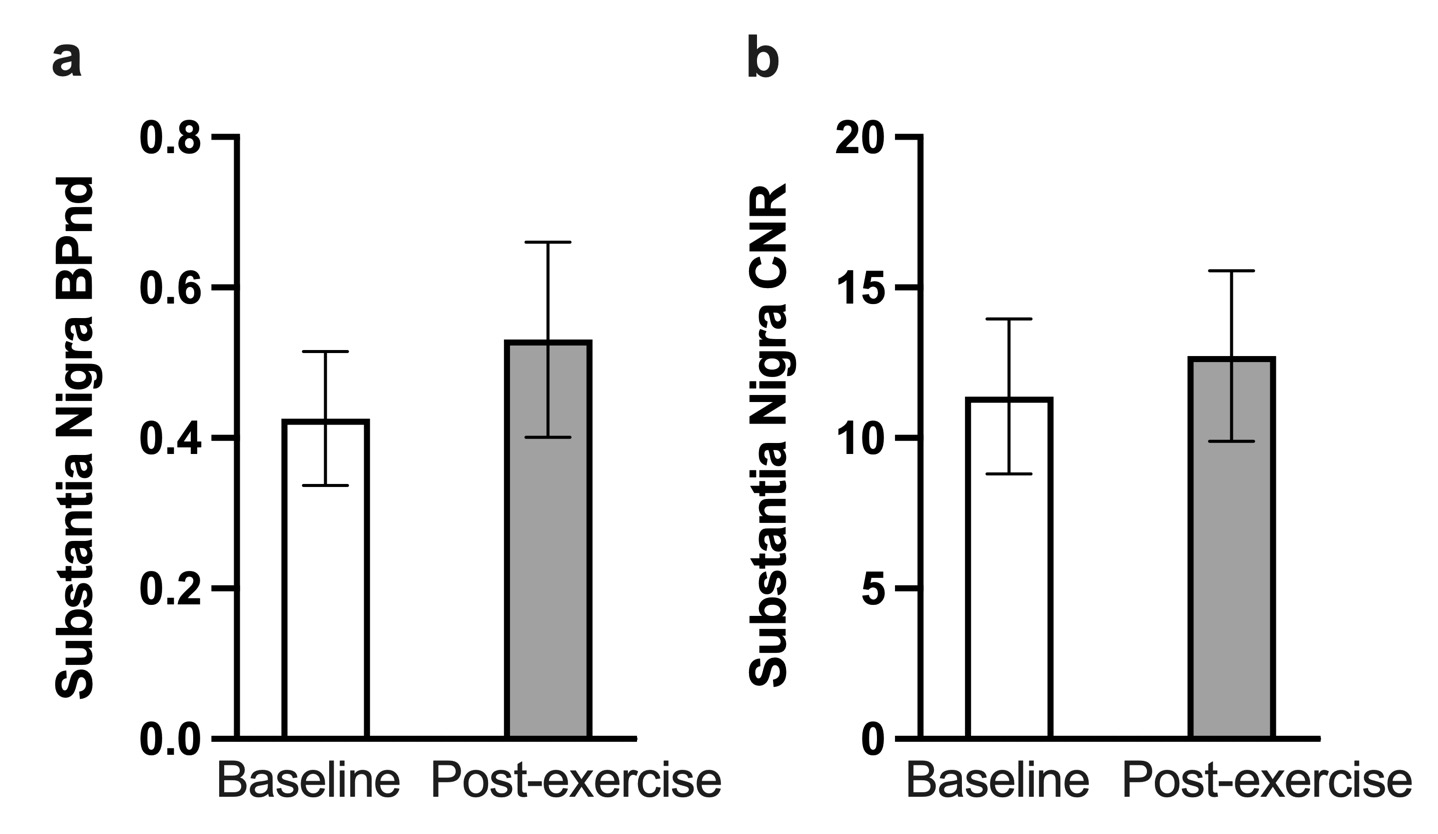Category: Parkinson's Disease: Neuroimaging
Objective: We used PET imaging with 18F-FE-PE2I to quantify dopamine transporter availability and neuromelanin (NM)-MRI to measure the NM content in the substantia nigra (SN) before and after six months of high-intensity interval training (HIIT) in individuals with Parkinson’s disease (PD).
Background: High-intensity exercise delays the clinical progression of PD. Exercise has also demonstrated neuroprotective effects in animal models of PD. The potential neuroprotective effects of high-intensity exercise have not been investigated directly in individuals with PD in vivo.
Method: Subjects with a recent (<5 years) PD diagnosis participated in the PD-specific HIIT program three times per week for six months. High intensity was defined as 85% of the maximum heart rate and verified with a heart rate monitor. Motor and non-motor symptom were also evaluated. Subjects underwent a 60-minute 18F-FE-PE2I PET and six NM-MRI scans at baseline and after the exercise period. Binding potential (BPnd) was estimated for the caudate, putamen, and SN with the Simplified Reference Tissue Model using the cerebellum as reference. The NM content in the SN was estimated based on the voxel-wise contrast-to-noise ratio (CNR) using the crus cerebri as reference.
Results: Five subjects with mild PD (3 females, age: 63.3 ± 5.8, Hoehn and Yahr stage 2 ± 0, disease duration: 2.0 ± 0.5 years) have completed the HIIT program. Post-exercise, subjects showed improved scores on the MDS-Unified PD Rating Scale-total (from 36.4 ± 7.3 to 32.8 ± 7.0) and the PDQ39 quality of life questionnaire-summary index (from 8.3 ± 3.9 to 7.0 ± 3.5). Mean post-exercise 18F-FE-PE2I BPnd compared with baseline was increased in the SN (% change: 24.7±15.5) [figure1a] and putamen (% change: 3.1 ± 15.2), and decreased in the caudate (% change: -6.9 ± 25.7). Mean post-exercise CNR compared with baseline was increased in the SN (% change: 13.7 ± 31.5) [figure1b].
Conclusion: Preliminary results suggest that HIIT, consistent with previous reports, may improve motor and non-motor symptoms while exerting neuroprotective effects particularly on the nigral neurons in individuals with mild and early PD.
To cite this abstract in AMA style:
S. Tinaz, B. de Laat, G. Stanley, J. Hoye, J. Key, M. Hespeler, J. Ligi, Y. Huang, N. Nabulsi, E. Morris. Brain effects of high-intensity exercise on the dopamine system in individuals with Parkinson’s disease [abstract]. Mov Disord. 2022; 37 (suppl 2). https://www.mdsabstracts.org/abstract/brain-effects-of-high-intensity-exercise-on-the-dopamine-system-in-individuals-with-parkinsons-disease/. Accessed March 31, 2025.« Back to 2022 International Congress
MDS Abstracts - https://www.mdsabstracts.org/abstract/brain-effects-of-high-intensity-exercise-on-the-dopamine-system-in-individuals-with-parkinsons-disease/

